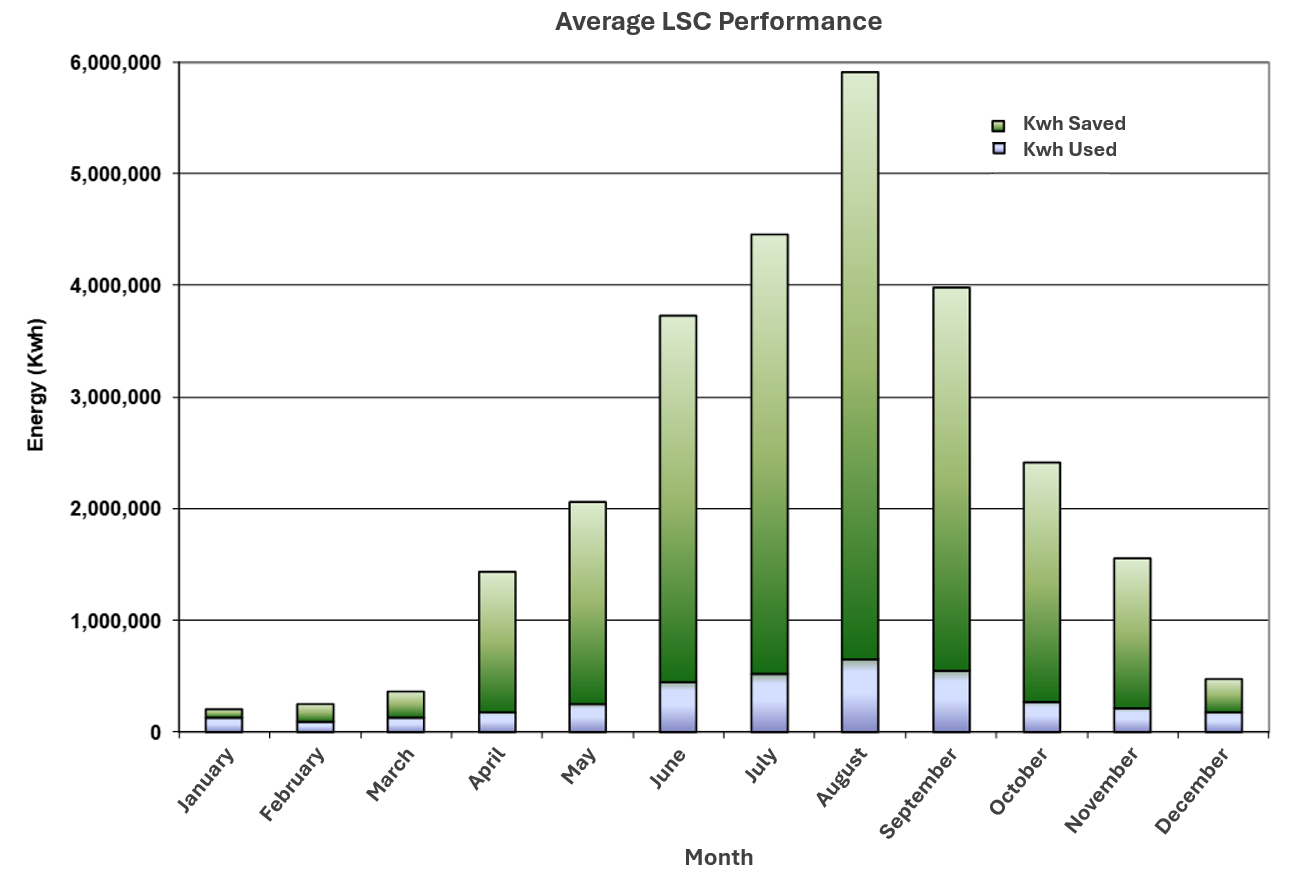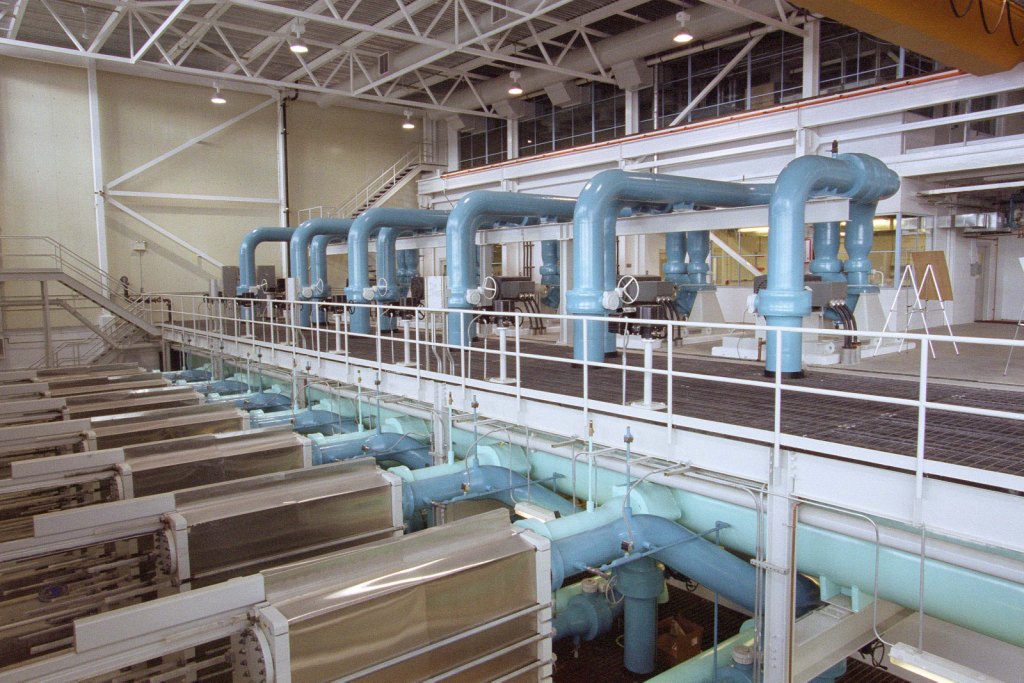Lake Source Cooling
Lake Source Cooling is one of the most significant environmental initiatives ever undertaken by an American university to promote a sustainable future. With its startup in July 2000, Lake Source Cooling (LSC) upgraded the central campus chilled water system to a more environmentally sound design that conserves energy and utilizes a renewable resource, the deep, cold waters of nearby Cayuga Lake.
With an initial price tag of $58.5 million, LSC cost considerably more than replacing existing campus chillers with new. However, a driver for Cornell’s investment was a commitment to reduce refrigerant use in campus equipment to benefit the environment. Now, decades into LSC’s operation, it’s clear that the benefits exceed expectations.
LSC saves over 29 million kWh per year versus previous cooling methods, enough to offset the annual electricity used by 7,970 homes in Tompkins County… an 85% reduction in energy used for campus cooling
The renewable resources tapped by LSC have reduced Cornell's reliance on fossil fuels. LSC saves over 29 million kWh per year versus previous cooling methods, enough to offset the annual electricity used by 7,970 homes in Tompkins County. This represents about an 85% reduction in energy used for campus cooling.
Energy savings for an average year are depicted by the following chart:
A well-proven cooling technology transfers the heat from the campus chilled water to the lake water through heat exchangers that separate the lake water and campus water - the two loops never mix. Because heat flows naturally from hot to cold, no extra energy is required beyond that needed to move the water through pipes.
Thanks to LSC’s primary role in the campus district cooling system, 98% of the cooling on Cornell’s Ithaca campus is renewable and refrigerant-free. During times of peak demand and maintenance, LSC is supported by a thermal storage tank and three chillers that use approved refrigerants. Since LSC is designed to last 75 to 100 years – more than twice the typical life of chillers – the innovative system is a long-term, cost-effective, planet-positive solution to the university's cooling needs.
LSC is designed to last 75 to 100 years – more than twice the typical life of chillers
LSC was proposed in 1994 and approved by the New York State Department of Environmental Conservation in 1998. Nearly four years of environmental study and review resulted in a four-volume, 1500-page Environmental Impact Statement that thoroughly described the potential impacts of the project on the lake. The DEC determined that LSC could provide the stated environmental benefits without harm to Cayuga Lake. Even so, the DEC has required Cornell to include many special features in the construction and operation of the project to further minimize any impacts identified. In addition, they required the university to carry out a lake monitoring program that, through data and independent oversight, will verify its safe operation on the lake.
Construction began in March 1999, and the project was completed in the year 2000. The construction phase provided many benefits to the public, which total over $2 million in value to the taxpayers of the City and Town of Ithaca and the City of Ithaca School District. Participants in the project include Cornell University, the City of Ithaca, the City of Ithaca School District, and the Town of Ithaca.





